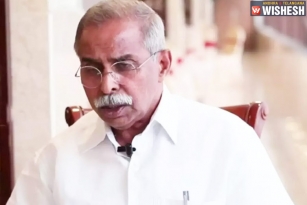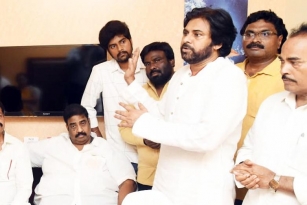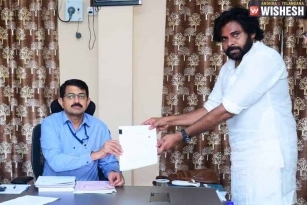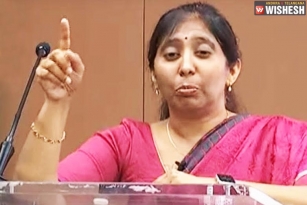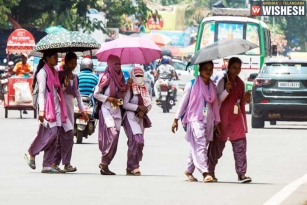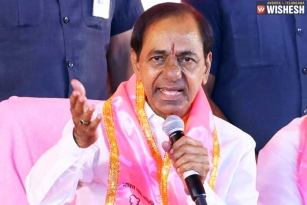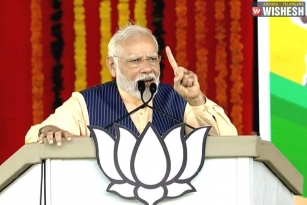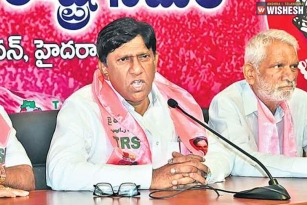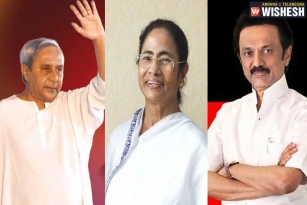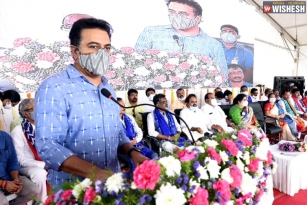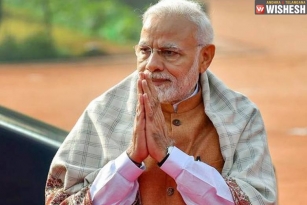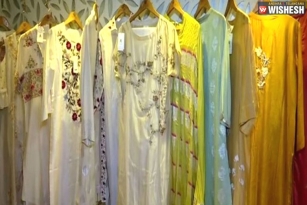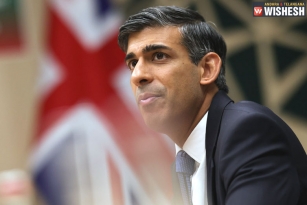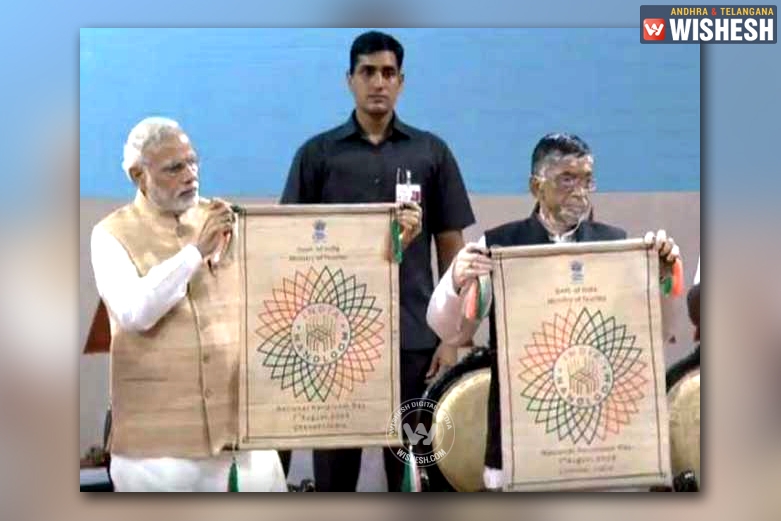
Prime Minister Narendra Modi today announced August 7 as National Handloom Day at Chennai to mark the 1905s Swadeshi movement. It was on August 7th, 1905 the formal proclamation of the Swadeshi Movement was made in a meeting at the Calcutta Town hall. The movement announced the boycotting of British products and the revival of domestic products and production processes. Around 3,000 handloom weavers from various parts of the country has attended the function at the Madras University Auditorium today.
"The observance of National Handloom Day and honouring of handloom weavers will not only provide an impetus to India's handloom industry but would also serve to promote handloom as a genuine international product of good quality," an official statement said.
Handloom weaving provides direct and indirect employment to more than 43 lakh weavers and allied workers. The sector is responsible for nearly 15% of the cloth production in the country and contributes to export earnings. Around 95% of the world's hand-woven fabric are from India.
Government is committed to extend robust social security cover to weaver families said Prime Minister. He urged the entertainment industry to popularise handloom. Fashion and design education in India needs to be re-oriented. We need to make our handloom tradition the centrepiece of fashion for India and the world said Prime Minister.
Only 15 per cent of the clothes we use now are handloom product. If we just increase our usage by five per cent, the handloom sector will grow by 33 per cent. We need to popularise this among our youth. This will give the much-needed boost to the handloom sector said Mr. Modi.
Hand loom fabrics are hand woven on a simple loom, the fabric has a history of connecting the madder cloth unearthed in Mohenjodaro, to Megasthenes’ “fine flowered muslin,” the Roman description of the Indian fabric as ‘vetri vente,’ the diaphanous robes worn in Mughal times and today’s Benaras bomkai, Baluchari, Maheshwari, Mangalagiri and muslin, Kanjeevaram, khadi and the humble ‘veshti’ (dhoti).
The technique and expertise has given India a global advantage, making it, till the first half of the 19th century, the largest handloom producing country in the world, famous for its excellent fabrics.
Weavers like Gajam Yalagiri, Gajam Goverdhan and Jyotish Debnath have trained many new entrants to the field of ikkat and Jamdani weaving. Chintakindi Mallesam’s ‘Asu’ device, eases the manual hand movements of creating a Pochampalli ikat, and Bhanumurthi’s innovation in making the process of Korvai seamless, are steps that took the handloom movement forward. Fashion designers such as Sabhyasachi and Ritu Kumar use handlooms for their fashion lines.
The population of Maheshwari weavers have doubled in the past few years, largely due to the work of individuals like Sally Holkar, whose landmark brands, Rehwa and Women Weave, have drawn many women into the fold. Equally remarkable is the Judy Frater’s work with Sommaiyya Kala Vidya, Kutch, set up by her. No account of handloom’s journey can be complete without mentioning the Dastkar Andhra’s work. Currently, 500 weavers in 20 villages of Andhra weave saris, dupattas and stoles.
By Premji




